BR TIMES
ISSUE 1
JULY 2025
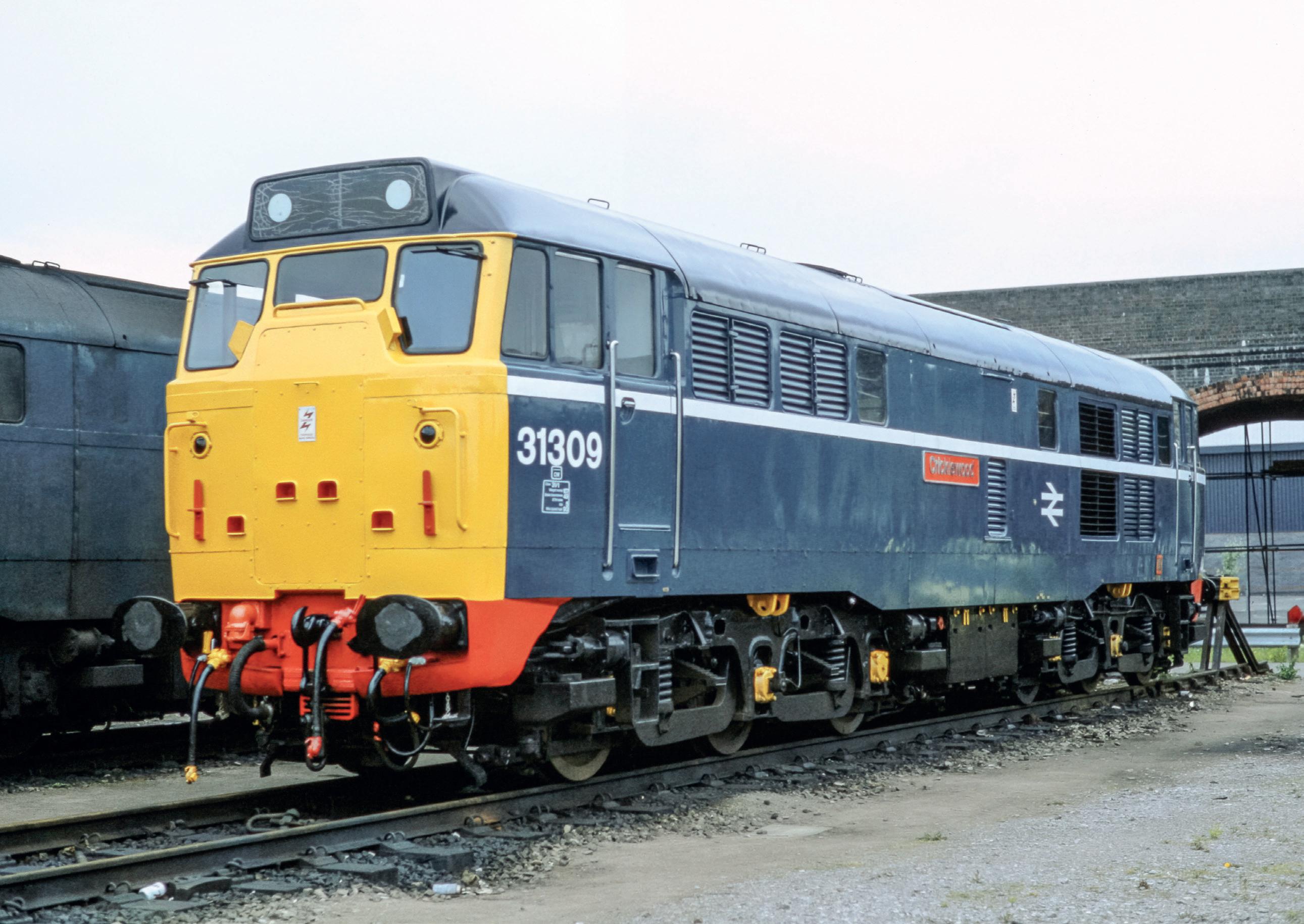
THE HISTORY PERIODICAL FOR STUDENTS AND ENTHUSIASTS OF THE BRITISH RAIL ERA


THE HISTORY PERIODICAL FOR STUDENTS AND ENTHUSIASTS OF THE BRITISH RAIL ERA
Helloand welcome to our first issue of ‘BR Times’, the new history periodical for students of the British Rail era.
As a rail enthusiast of 40 years and a railwayman now in my third decade of service, I have a deep appreciation for the British Rail era. I grew up in Westhouses, an innocuous Derbyshire village which owes its existence to the Midland Railway. They built an engine shed and rows of employee inhabited terraced houses, each on a street named after a director of the Midland Railway. They even built the school where I went as a child. Westhouses, much like 'BR Times', is a microcosm of interest to the railway enthusiast, the modeller and the social historian.
Unlike the existing Times series, 'BR Times' will cover the epoch roughly spanning 1965 to 1997. During that time BR undertook an immense amount of change. Steam was usurped by diesel and electric locomotives, lines were closed and DMUs and EMUs of the modernisation plan proliferated. The corporate image became omnipresent and with the HST, BR decreed that this was, ‘the age of the train’. Against this backdrop, we will examine its everyday activities through carefully chosen pictures and illustrated articles pertaining to the three decades and five regions of BR. Additionally, as I am also inquisitive and questioning of the esteem in which it is held, we will also be asking, was BR really as bad as many remember and do we give it the credit it really deserves for its many successes?
Over this and future issues we will look at a range of areas and aspects of BR. There were the great successes of: electrification, Speedlink, the Gatwick Express and of course the HST. There were however the less appealing points such as the basic railway concept and the failure of the APT program. You also may have an area of interest in BR and a story to tell. Thus, we welcome your contributions to the future issues of 'BR Times' and especially your feedback and comments on our first instalment.
In our first issue of 'BR Times' we have sought to cover a balanced range of BR related topics and as coal was the catalyst for the railway’s rapid growth, it is fitting therefore that it is examined here in part one of our look at the merry go round coal network. Observing a diverse range of trains in action was a great pleasure for many and here we will see a spread of pictures from the 1980s of services through Chesterfield. Also included is a sample log of the immense variety of services BR were operating at the time. While not on the scale of the Beeching era, BR closed a number of lines. One such route was that between Market Harborough and Northampton on the London Midland Region. We take a look at the line to depict its signal boxes and its workings through to closure. Depot visits were enjoyed by many enthusiasts, especially those epic trips involving long, often overnight, excursions to multiple depots. We begin our
look at BR’s depots with its farthest flung establishment, that at Long Rock, Penzance. From its Warships and Westerns to its Peaks and HSTs, the depot went from a steam shed hovel to a modern marvel. In Scotland we look at the Glasgow to Edinburgh route and its motive power. In part one we look at its early adoption of the DMU followed in part two with a look at their unique push pull sets powered by top and tailed Class 27s and in part three, the Class 47s with their Driving Van Trailers. Pip Dunn takes a look at the life one of BR’s most successful locomotives, the Class 37 and their many sub Classes and variations. David James gives us a personal insight into his time at the Southampton Maritime facility and how containers were transported from there across the country. The Class 40s were held in high regard by many enthusiasts and over two parts we consider their withdrawals and how they fared in their final years.
Alex Fisher - Editor

The Class 86s were the very backbone of BR’s electrified services over the West Coast mainline. An order for 100 locomotives was placed in 1963 and this had been split between two manufacturers, with the English Electric Vulcan Foundry in Newton-le-Willows building 60 locomotives and BR own Doncaster Works producing 40. Capacity problems at Doncaster however meant that this split was pretty much flipped. The fleet were numbered E3101 to E3200, and while the first three Class members, E3101-3, weren’t officially introduced to service until 21 August 1965, examples from each manufacturer were noted on test in January 1965.
The entire fleet was built quite rapidly over the ensuing two years with the last of the Class to enter service being E3160 on 14 October 1966.
From the onset, their workings were incredibly varied and here at 'BR Times' we would like to hear which of the workings included in this selection you feel is the most unusual. You may have an even more unusual view you may wish to see featured in the next issue of 'BR Times' (contact details on page 2). Workings not depicted but which perhaps could be in contention for the oddest Class 86 working are pictures of: the two Class members which worked the first Class 86 hauled passenger
service, a football special in May 1965, examples on pick-up goods trains, views of them working with the ex-LMS 40-ton hoppers used on services to Stonebridge Park and record shots of E3173 when it was fitted experimentally with a streamlined fibreglass nose cone to assist BR’s research into aerodynamics and highspeed running for their new Advanced Passenger Train and High Speed Train. In all, for any Class, let alone one confined to the electrified lines of BR, they had a remarkably varied work schedule and turned up on some of the most unlikeliest of workings and we look forward to seeing the best of them.

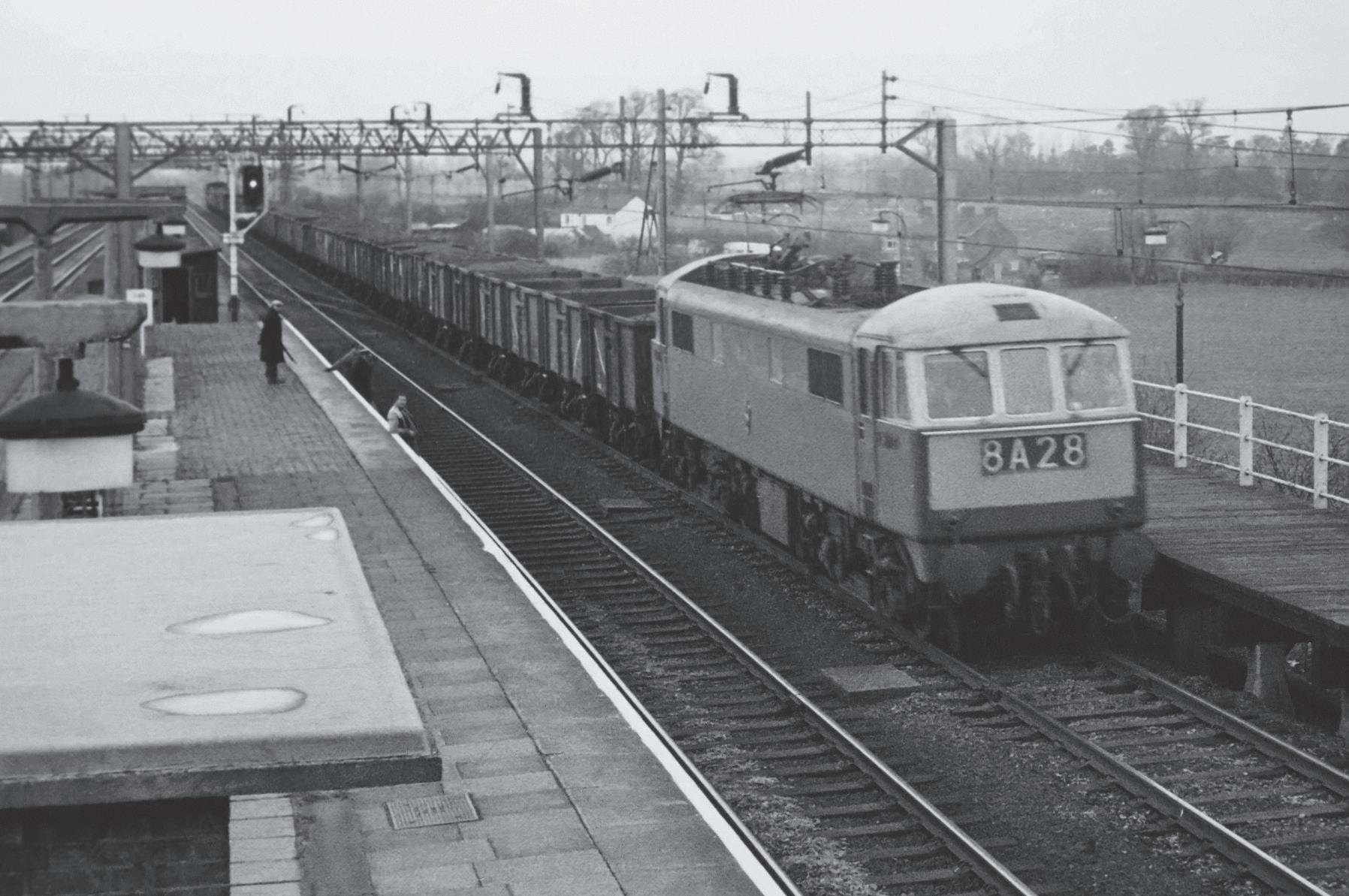
◀ With a rake of around 30 mineral wagons plus brake van, E3170 (86002) powers 8A28, an Up freight, through Cheddington station, just south of Leighton Buzzard, sometime in 1967. (Chris Lodington)
▼ AL6 E3171 (86011) is seen passing Basford Hall Yard on an Aintree to Parkestone Quay freightliner on 19 September 1969. (Tim Stubbs / Online Transport Archive)

Justwest of Newton Abbot lay Aller Junction and its associated signal box. In its time it controlled the extremely busy Great Western mainline towards Plymouth and the junction and splitting route for Paignton. While the latter saw heavy holiday traffic, especially on a summer Saturday, the former also saw freight traffic, especially china clay, along with postal and parcel services from Plymouth and Penzance. Seen here is a collection of views of its varied motive power and changing times through to the abolition of the signal box and control from Exeter Power signal box.
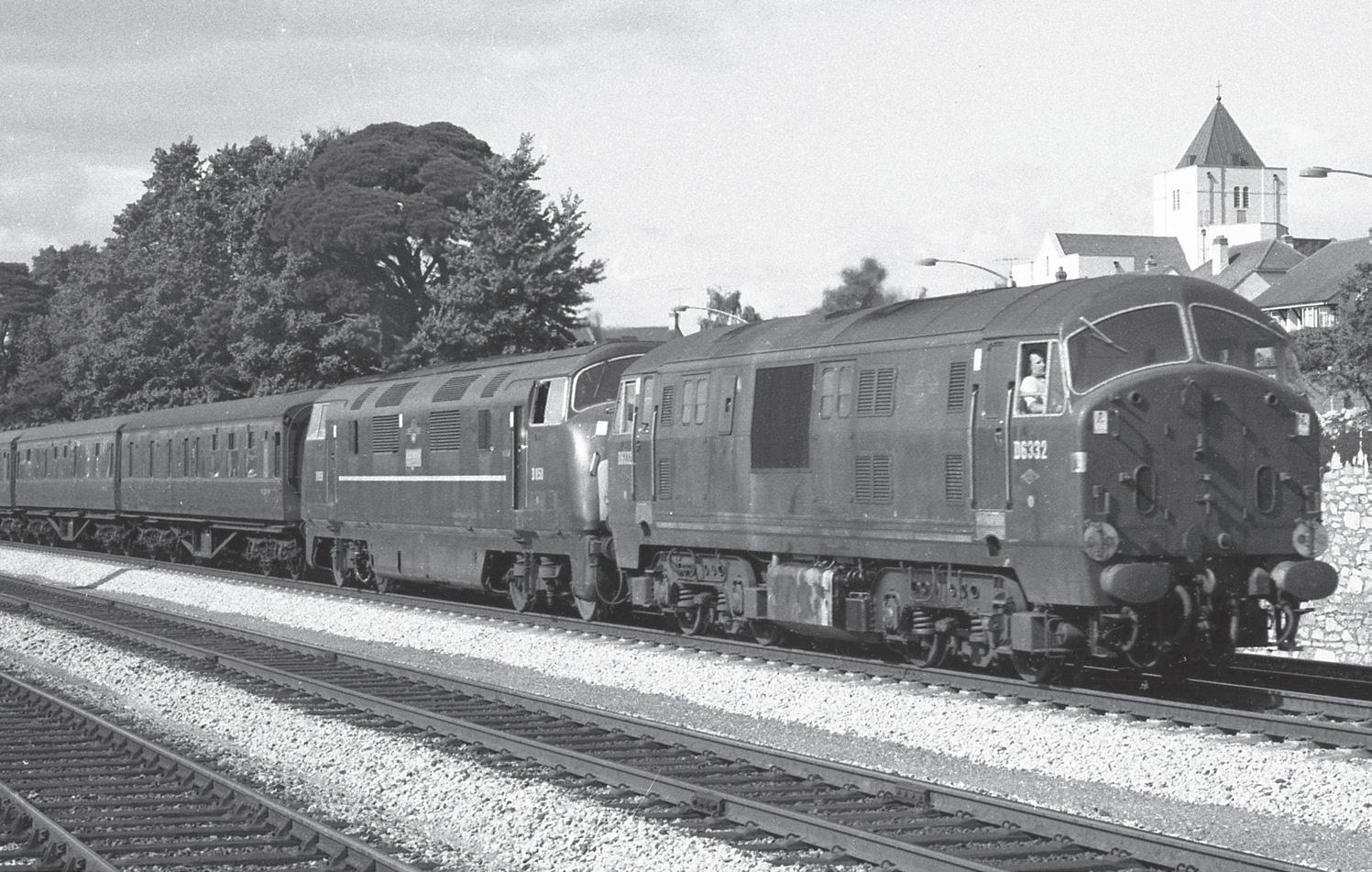

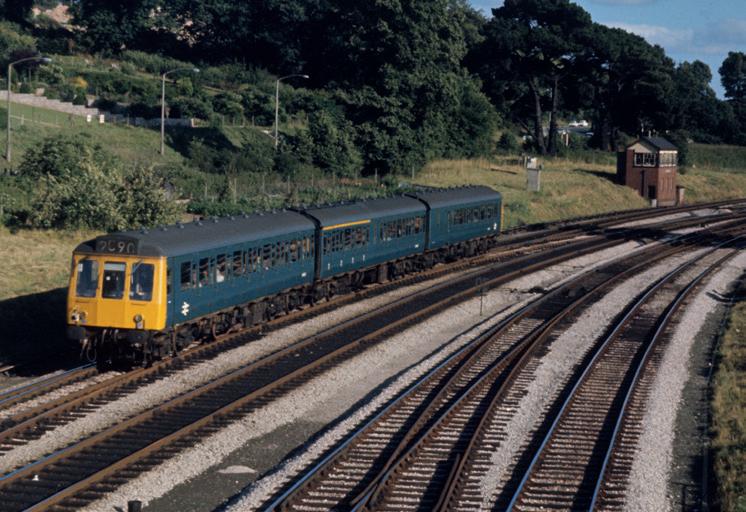


▲ Heading westbound with a very

▲ Working wrong line is Network Southeast liveried 50017 Royal Oak on 1A77, the 16:10 Paignton to Paddington service on 20 September 1986. The loco had arrived at the south west resort earlier that day having worked west on 1C38, the 11:35 London Paddington to Paignton service. (Bernard Mills)
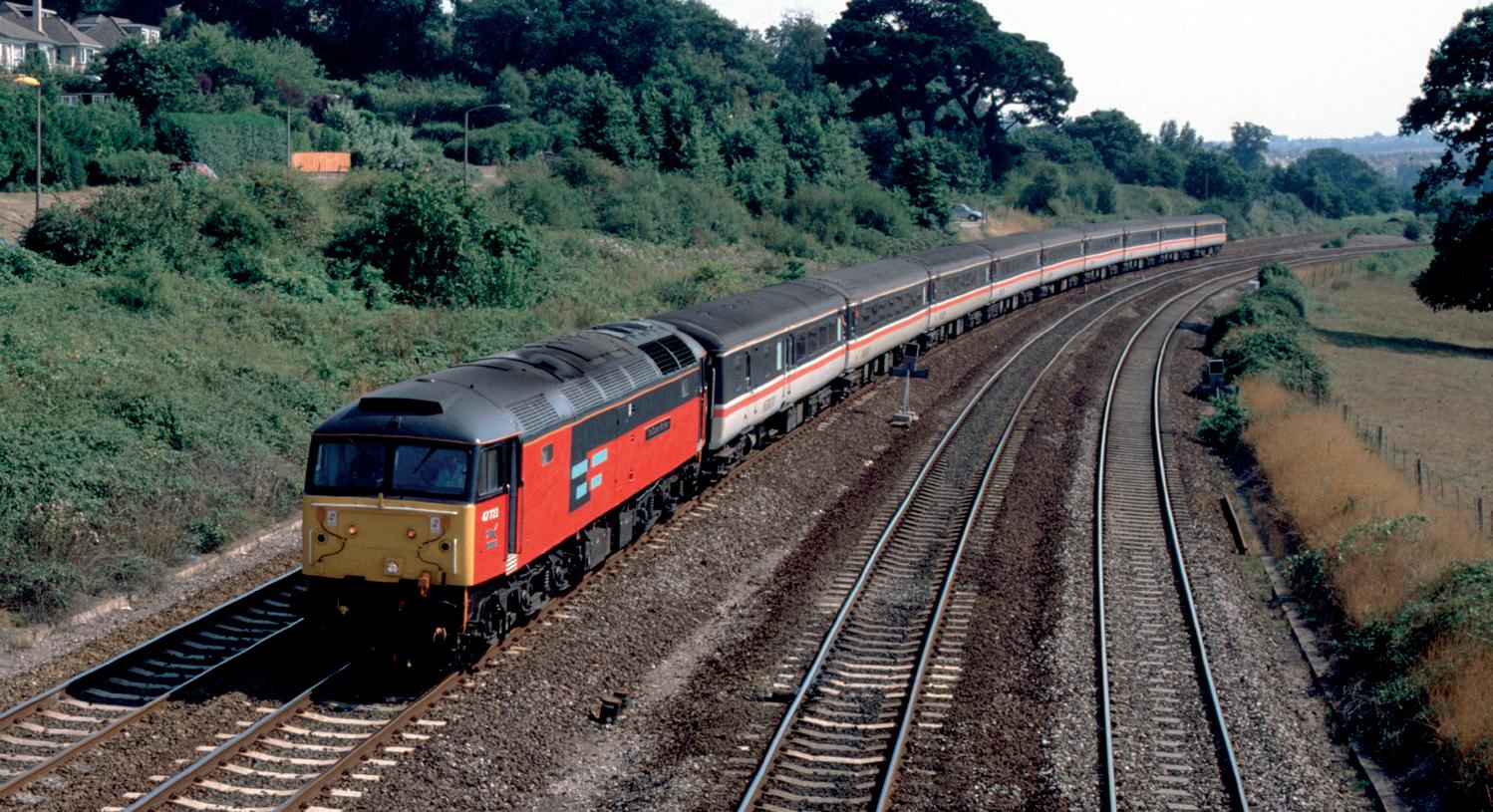
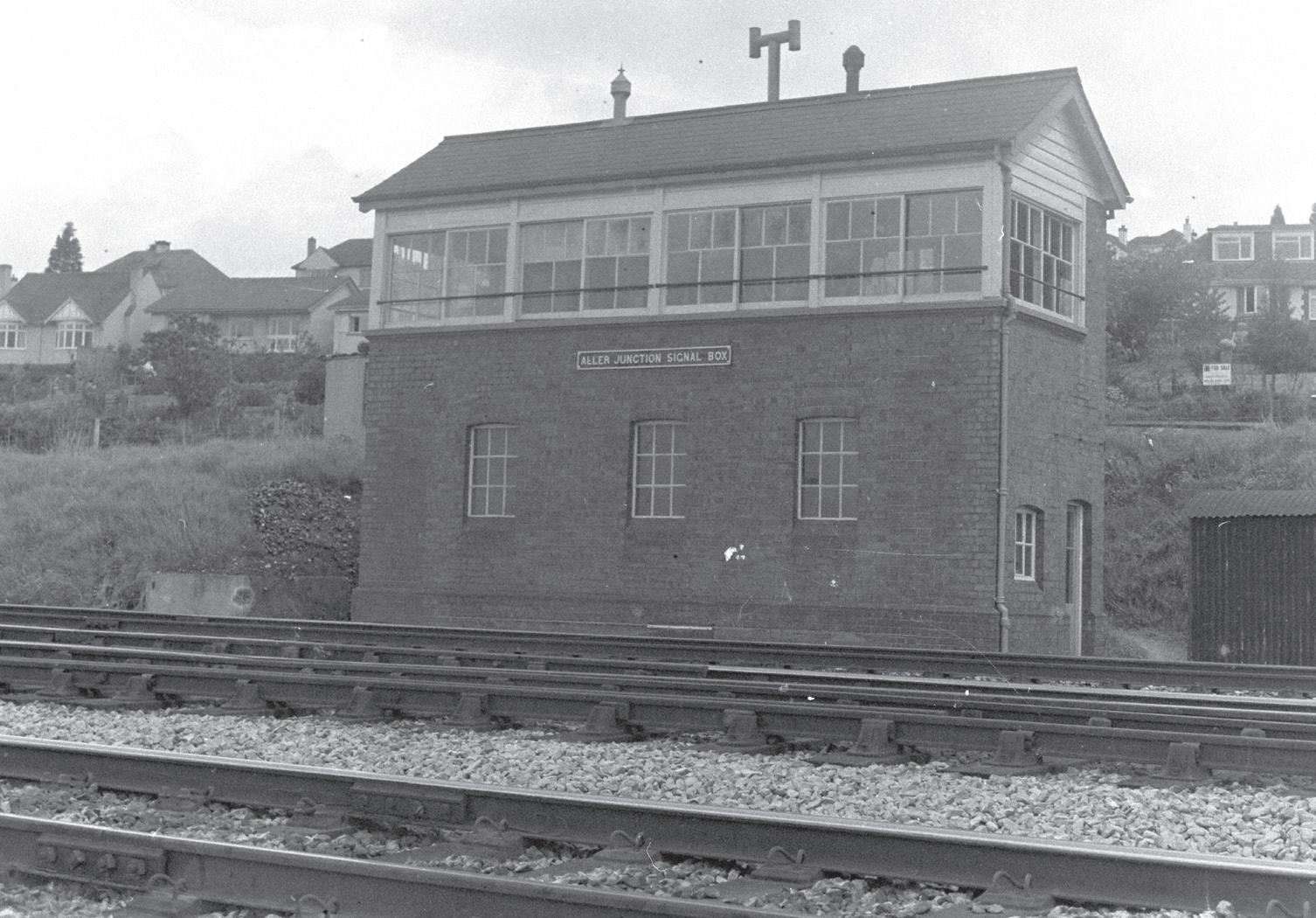
◀ With the signal box here having closed in 1987, the junction looks rather sparse. Providing a splash of colour however is RES liveried 47722 The Queen Mother, as it hurries what is probably 1S93, the 15:01 Paignton to Glasgow Central service. It was known to have worked this train on Saturday 19 August 1995 as far as Birmingham New Street and had taken over 1V41, the 08:10 Liverpool Lime Street to Paignton train, from Birmingham New Street, earlier that day. (Bernard Mills)
▼ Aller Junction signal box stood on the Great Western main line between Newton Abbot and Totnes, approximately 195 miles from Paddington. The Great Western Type 8A box had opened on 24 May 1925 and contained a 46 lever GW VT3 frame. It controlled the junction with the branch line to Paignton and the junction where the Up and Down main lines became a four-track railway with main and relief lines in both directions into Newton Abbot station. Beyond Aller Junction, in the Down direction, was the infamous climb to Dainton Summit. It was key to the punctual running of Down trains that the Aller signalman was able to obtain acceptance from Dainton Summit SB and then be able to clear his signals before the train reached the Down Main Distant. This indicated a clear road ahead and drivers could “open up” in order to attack the bank which had gradients as steep as 1:34 in places. Aller Junction SB was closed with the introduction of the panel box at Exeter in May 1987 and post closure the lever frame was originally purchased by G.M. Kitchenside, author of several railway books including “British Railways Signalling”. He intended to use it as part of a garden railway project at his home in Newton Abbot. When this didn’t come to fruition it was sold some ten years later to the GWSR where it was then restored for use in Broadway signal box.
(J G Smith)
▼ Seen passing Draughton Crossing box is 1540 (Class 47) with 1M98, the final 22:50 Glasgow Central to Euston sleeper train on 29 April 1972. (John Evans)

▼ Kelmarsh signal box was closed on 31 October 1971 and is seen here sometime shortly afterwards. (Craig Donald)

▼ Viewed from the track line are the Kelmarsh tunnels as the line splits at their south end. The straight, northbound track on the left is the original route of the single track line, while the curving route to the right, is the southbound tunnel which was built to enable the railway to become double track. Inside these tunnels were tall, thin and built with brick inverts as refuges for the platelayers. White plates were installed on both sides of them to improve their visibility to anyone working inside the tunnels. (Craig Donald)

▼ Once an everyday scene in the ironstone quarries throughout Northamptonshire. Here we see a Brush Type 4 at Lamport Ironstone Sidings as it readies its train of rich, red ironstone. On the right are empty wagons which had been left for the next train on 6 April 1966. The signal box here, had a 15 lever LNW Tappet Frame which controlled the quarry's access to the mainline. Note on the right hand side is a Midland Railway crossbar signal, worked by lever No 8, to denote when shunting needed to pause. After the quarry had closed, the box closed on 13 February 1970. The other quarry at Pitsford was closed in 1965 and the internal railway was lifted in 1966 with the last movement being on 12 July 1966 when the quarry's Pitsford loco made a journey to Lamport Goods Yard from the BR Sidings. Its associated signal box, Pitsford Ironstone Siding was duly closed on 4 April 1967. (John Evans)


▲ It's tempting to look back at the 1960s and think that engines like the Peaks (Class 45) were used exclusively on passenger trains, but that certainly was not the case. Here on 11 April 1967 we see No D59 The Royal Warwickshire Fusiliers heading north on the Northampton to Market Harborough line with a train of unfitted empty mineral wagons. Lamport ironstone quarry is on the right and the signal box controlling the junction can just be seen behind the engine. (John Evans)
▼ Having traversed the Market Harborough to Northampton line, Class 20s Nos 20178 and 20189 pass Northampton No 4 signal box with a coal train from Toton on 10 May 1978. (Lewis Bevan)



Welcome to the first issue of BR Times, a new history periodical dedicated to students and enthusiasts of the British Rail (BR) era.
As a rail enthusiast of 40 years and a railwayman now in my third decade of service, I have a deep appreciation for the British Rail period. I grew up in Westhouses, a modest Derbyshire village that owes its very existence to the Midland Railway. The railway built not only an engine shed, but also rows of terraced houses for its employees - each street named after a Midland Railway director. They even constructed the school I attended as a child.
Westhouses, much like BR Times, is a microcosm of interest for the railway enthusiast, the modeller, and the social historian alike.
Unlike the established Times series, BR Times will focus specifically on the era from around 1965 to 1997. This was a time of immense change. Steam gave way to diesel and electric traction, many lines were closed, and DMUs and EMUs proliferated under the Modernisation Plan. BR’s corporate image became omnipresent - an era symbolised by the HST and the bold declaration that this was ‘the age of the train.’
Against this backdrop, BR Times will examine the everyday activities of BR through carefully chosen photographs and illustrated articles covering the five regions and three decades of British Rail. But we will also be asking: Was BR really as bad as many remember? And do we give it enough credit for its many achievements?
ISBN: 978-1-917776-12-7

£13.50
